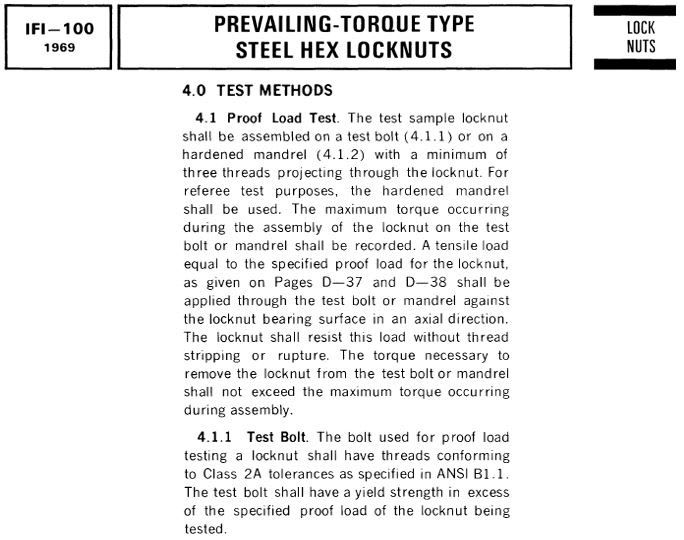rollingcloud
Aerospace
The supplier informed us that the test bolt threads are experiencing wear during a reusability test for a self-locking nut. They observed a change in thread dimensions after just 2-3 cycles, along with increased heat generation. The nut is silver-plated and waxed, and it is crimped to create the self-locking feature. Both the nut and the test bolt are made of Waspaloy N07001, with hardness measurements of ~32–34 HRC.
This is a standard nut that is part of the legacy parts, so deviation from the specification is not allowed. I am trying to understand the issue and help the new supplier address it. The supplier passed the test using a test bolt that is reduced by 0.003’’ from class 3A tolerance and is proposing that we accept this reduced tolerance deviation. Obviously, we can’t agree to this, as class 3A tolerance is very common in the industry. I have only seen reduced test bolt tolerance used when the actual mating bolt in the assembly has a reduced tolerance.
I suspect the wear might be caused by the silver plating being too thin, a lack of lubrication (oil) between cycles, or—less likely—torquing too fast or over-torquing. The test bolt thread is also unnecessarily long. Since the prevailing torque of the first cycle was acceptable, the locking feature seems to be functioning properly, so I don't believe over-crimping is the cause. What do you guys think
Test data:
This is a standard nut that is part of the legacy parts, so deviation from the specification is not allowed. I am trying to understand the issue and help the new supplier address it. The supplier passed the test using a test bolt that is reduced by 0.003’’ from class 3A tolerance and is proposing that we accept this reduced tolerance deviation. Obviously, we can’t agree to this, as class 3A tolerance is very common in the industry. I have only seen reduced test bolt tolerance used when the actual mating bolt in the assembly has a reduced tolerance.
I suspect the wear might be caused by the silver plating being too thin, a lack of lubrication (oil) between cycles, or—less likely—torquing too fast or over-torquing. The test bolt thread is also unnecessarily long. Since the prevailing torque of the first cycle was acceptable, the locking feature seems to be functioning properly, so I don't believe over-crimping is the cause. What do you guys think
Test data:

